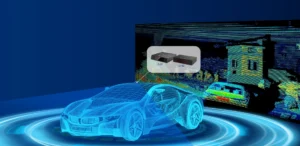Just like an animal of blood and flesh, driverless cars need to see the world through different detectors. This kind of perception and sensing can be attained using distinct types of sensors, which collects information about the surrounding and presents it into something that a computer can comprehend. Much like the sense of human beings, there’re different pros cons, using the right detector for the correct application will be essential to a successful self-driving product. When to use Lidar or radar is one among the many questions that need to critically look into.
By definition
Automotive radar
It is also known as Radio Detecting and Ranging. In the context of autonomous driving, radar is a vital complementary sensor that solves other detectors weaknesses. Nevertheless, radar can determine the velocity of an object and works well even during the day, night, in snows, fogs and rains.
Autonomous lidar
Lidar refers to Light Detecting and Ranging. It uses lasers pulses to generate a 3D model of an environment around the vehicle. Essentially, they’re critical and help in seeing other objects such as cars, cyclists and pedestrians.
Lidar vs radar in autonomous car
In self-driving cars, the application of radar and lidar systems has created a competition that is getting real. Besides, it has enhanced a kind of rivalry within the automotive firms. While most of the world-renowned companies such as General motors and Waymo mostly depend on Lidar, Tesla has decided to stick to radar. Recently, Elon Musk again ashamed the lidar technology referring to as a crutch.
Now, who’s right? Could it be that lidar is really unnecessary for driverless cars? Can radar systems alone provide efficient and accurate images for the car’s environment? Let us find out this.
How lidar works
A lidar detector sends laser beams that reflect off the object and goes back to the sensor. Regarding the info received, the system creates a point cloud that resembles a shadow and bounces the object’s shape and size.
Why lidar is by far the most accurate for autonomous cars
Lidar technology has a lot to offer to driverless cars. It scrutinizes the domain of the car and generates exact 3D images that cover a 360 degrees view of the vehicles surrounding. Moreover, using lidar system does not only see the road, cyclists, vehicles and pedestrians, it can also differentiate among the types of vehicles, animals, children and other objects that may require particular precaution measures such as slowing down. Lidar 3D figures of the environment are so precise to an extent that they can even view people’s gestures. This sounds impressive, does it?
Challenges of lidar technology
- It relies on weather condition- during weather conditions such as fogs, rains and snow, the system delivers inaccurate information.
- The lidar system is costly in both maintenance and production.
- The system is also no good at sensing the speed of other vehicles.
- Why choose lidar over the radar
- Lidar has a good detecting capability on small objects.
- It has great precision that creates a 3D monochromatic image of an object.
- Why is the radar system popular?
- This technology uses radio waves that determine the velocity of the object as well as their distance and angle. Just like lidar, radar sends waves that reflect off obstacles. Besides, it compares the transmitted signals to the received waves to comprehend the environment.
Why chose radar over lidar?
- Radar has a long operating distance
- It works in more varied conditions.
My final thoughts
Different companies that work on distinct projects within autonomous industries provides sensor needs, based on the kind of project. Radar systems are likely to be the most effective choice over lidar for driverless cars to quench forest fires. However, for the case of rock drilling, or vehicles on construction sight, the long working of radar is useless and the lidar sensor meticulous is the best for this area. So then, to reply to the question radar vs lidar, it’s all used based on the area of use.





